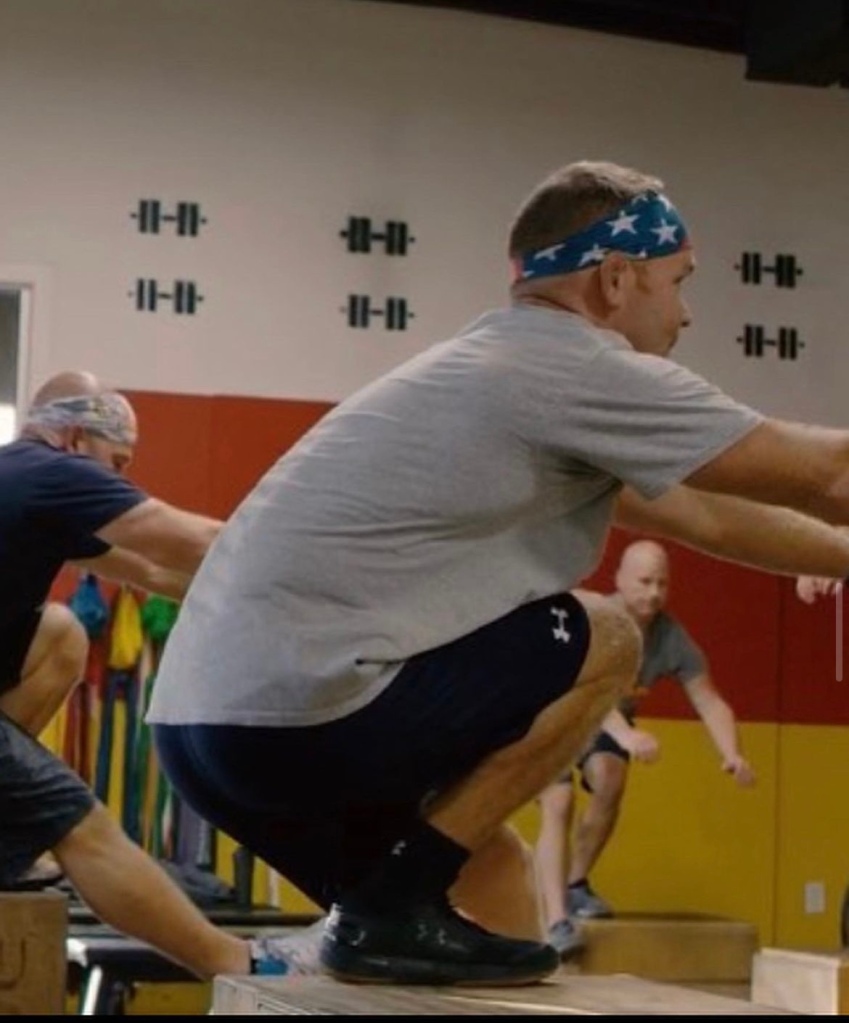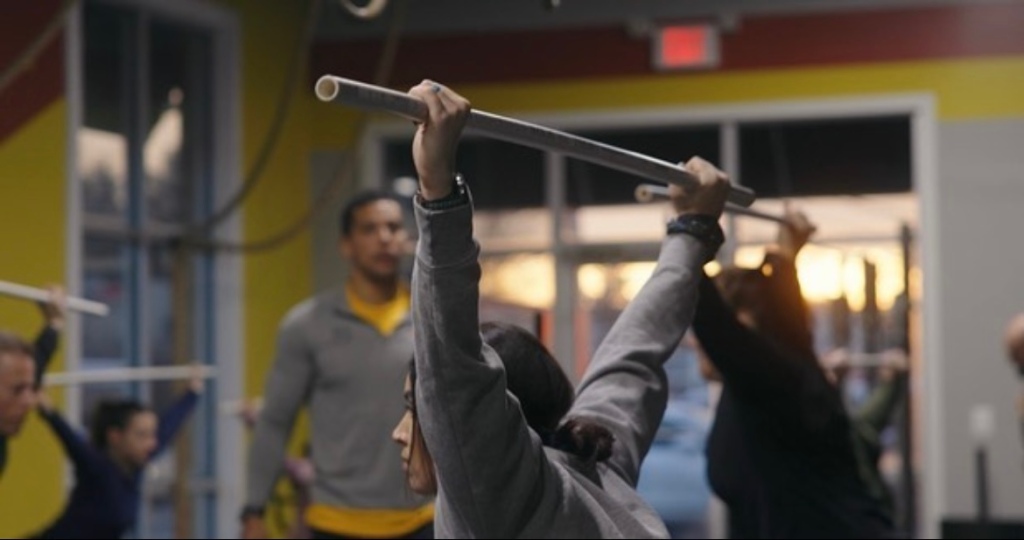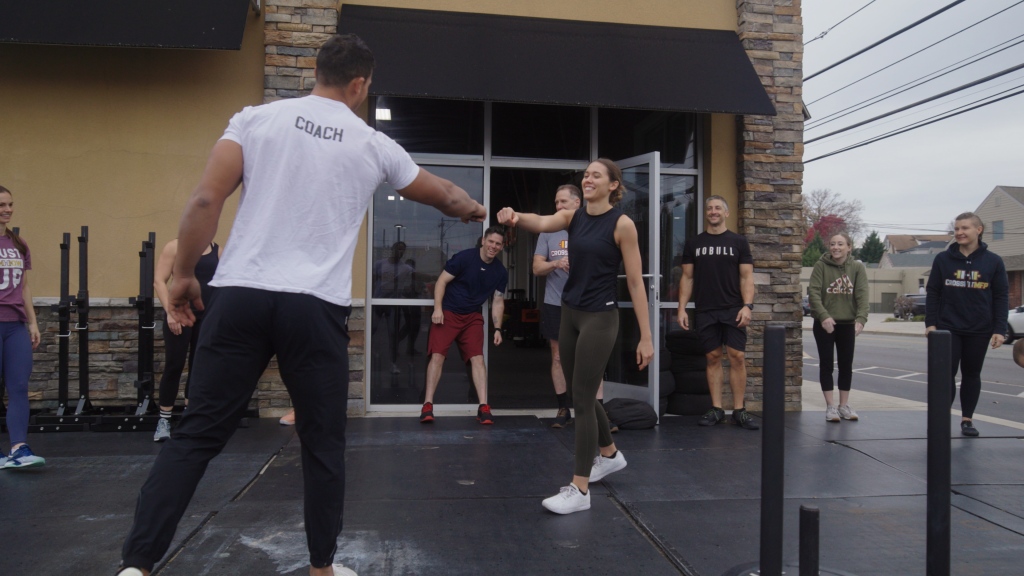Take a moment to think about these activities:
- Dance
- Gymnastics
- Parkour
- Wrestling
- Martial Arts
Now what do they all have in common? Personally, when I observe individuals partaking in these activities, I appreciate everything. I’m fascinated and curious about their abilities to maneuver, shape, and adapt their bodies in a variety of ways. Any professional who is dedicated to understanding human performance would admire these herculean individuals – and the physical feats they can accomplish. Why? It’s obvious, they perform at an extraordinarily high level thanks to the complexities of biomechanics, neurological competence, and all the other details that factor into high difficulty movement.
I love to analyze, observe, and most importantly, apply different practices to learn new perspectives. As someone whose professional life is committed to fitness, movement, sport, and performance, it’s important for me to practice what I preach. I come from an athletic background and have played different sports. Yes, being athletic and fit helps, but I’ve discovered something unique and powerful about being able to control your body… within a magnitude of ways.

The activities and sports I mentioned above all require high doses of movement variability to be executed at the most effective and productive levels. More importantly, the requirements for movement within these activities are not specialized or specific. Rather, they are highly transferable to other physical activities and sports. A sport like gymnastics, for example, involves movement that is significantly more transferrable to daily life than an explosive movement like pitching a baseball. The act of pitching in baseball is an admirable and impressive skill, but it is highly specialized to the confines of that sport.
What is movement variability?
I view movement variability as the ability to put your physical body into a variety of fixed positions and ranges of motion – while being in control of those positions through space and biomechanics. Additionally, I would also include the physical body’s ability to adapt and create resilience to these manipulations of space and biometrics. This includes when the physical movement is resisted by a variety of forces, as well as consistently exposed to different stimulations and repetitions.
I know what you’re thinking by now…I thought I was done with science class! Sure, it’s a mouthful, however, when you think about it at a fundamental level, it makes sense. So, be your own professor. Think about the activities listed above and create 3 requirements for the movement to participate in them.
Take some time to think… here’s what I came up with:
- They depend on someone’s ability to move their joints in large ranges of motion. This can involve flexing, extending, bending, and twisting within the entire body (arms, legs, ankles, knees, wrists, and the spine).
Example: Think about the stereotypical perception of a robot – like C3PO in Star Wars [insert photo below]. Whenever in danger, the helpless robot was extremely limited in his abilities to escape. Now, think about the robots from I, Robot [insert photo], you can see how impactful it is to have large ranges of motion. These robots are highly fluid and athletic.
- Their movement needs to develop a level of tolerance when placed under a variety of stress and force. This can include forces of gravity, external load, and trauma (non-intended force).
Example: think of a parkour athlete jumping off a high structure, or when a wrestler or martial artist must manipulate their body to overcome the weight of their opponent. Most of the time, their body is in a fixed position that requires #1 (joint range of motion).
- They all have an impressive ability to move within a variety of planes of motion. Essentially, this means that these athletes are consistently moving forward and backward, side to side, and rotating their bodies. In some cases, their activities demand that they move within all these patterns simultaneously.
Example: Go back to the robot example. Visualize the stiff C3PO, and the fluid advanced robot. Someone who can move fluidly through all planes of motion is well-equipped to perform, adapt, and thrive in any situation life throws at them.
Breaking Down the Planes of Motion
Now that we know what planes of motion are, let’s discuss each in detail.
The Sagittal Plane of Motion
When you move forward and backward, you prioritize the Sagittal Plane of Motion. No matter who you are, or what you do for a living, it’s crucial to understand the sagittal plane of motion. Everyone, from all walks of life, moves in this plane throughout the day. We move in this way as we walk, pick things up or sit in a squat.
Pros: If you are new to the science of human movement, the Sagittal plane exercises are a great place to start. Through the Sagittal plane, we have the most potential to exert absolute strength and create adaptation. The science behind it is simple – it’s due to simple biomechanical demand (actual movement) and lower neurological demand (brain comprehending the movement). We can adapt and pick up on this movement relatively naturally, and we can recruit larger muscle groups and resist external load when moving through the Sagittal plane.
Cons: This is not necessarily an issue with the Sagittal plane of motion, but rather an issue with the fitness industry (many exercise programs only prioritize this plane of movement). When you think about solely focusing on the sagittal plane of motion through a very targeted routine (bodybuilding), there’s a good chance you’ll end up with joints moving like poor C3PO. Limited range of motion can become exaggerated if exercises are done with partial range of motion, or if an individual has a history of physical inactivity or lack of exposure to other planes of motion.

Frontal/Coronal Plane of Motion:
When you Move laterally (side to side) you are utilizing the frontal, or scientifically known as the Coronal Plane. The Frontal Plane is mostly utilized within sport specific environments/demand. Most of the population typically does not have an incentive to move within this plane.
Pros: Other than specific performance measurements, exploring exercises/movement within the frontal plane allows me to accessorize areas of weakness and instability. For example, when you move/pull your leg inward, you are adducting, which is within the frontal plane. Your adductor muscle group is responsible for a variety of things, one specifically for stabilizing the hip/knee joints. Strengthening the adductors through frontal plane-based exercises could lead to more resilient knees and hips.
Cons: Underutilized most likely from the misconception that frontal plane exercises only benefit sports performance. Asserting that lateral based movements may not “transfer” to daily physical activities to some extent could have partial truth, but by avoiding this movement pattern, we miss out on developing our wholistic potential.
Note: the name “frontal” could be mistaken for the sagittal plane because you think moving forward.
Transverse Plane of Motion
Rotate and twist! When you move with rotation, you are utilizing the transverse plane of motion. This is fascinating to explore for several reasons – especially since it likely can provide the most movement variability potential while transferring to lifestyle and sport. In other words, the transverse plane of motion bridges the gap between the Sagittal and frontal plane biases.
Pros: When you explore the transverse plane movements, you can develop a significant amount of midline stabilization. This is because most exercises utilize the transverse abdominus muscle and the obliques. The transverse plane also allows us to biomechanically produce power when utilized in specific exercises (throwing).
Cons: These are complex movements! The transverse plane warrants high neurological demand and movement variability. Progression and proper integration are essential for individuals – especially those who are inexperienced. You will need a proper introduction and coaching to reap the benefits.
Understanding Multiplanar Movement
Multiplanar movement can be summed up by its name – it involves the movement integrating all planes simultaneously. This can occur when joints are moving within a specific plane(s), while the actual movement through space is being formed within other plane(s).
It’s simpler than it sounds. You likely have experience with one example – sprinting. You may be biomechanically moving through the sagittal plane (flexion and extension within the shoulders and hips), the muscles within the ankle, knee and hip stabilize through the frontal plane against forces (the impact of when the foot lands), while the transverse plane is highly manipulated to produce power and efficiency within the trunk (watch how the best runners have fluid movement in the midline).
Multiplanar Exercise Builder:
Start with a sagittal plane component (let’s say a split squat hold) then incorporate lateral instability (a band around the knee that pulls it in or out). Then, add a rotational component (rotating and throwing a medicine ball to a wall, or just twisting the spine).
This can get complex, and not fully necessary to implement into a training program rather than choosing sagittal/frontal/transverse plane exercises solo, but there is a vast range of benefits to exploring multiplanar exercises.
One specific exercise that I would suggest to anyone and everyone is the Turkish Get Up. This is a multiplanar exercise that functionally transfers to general longevity and athletics.
Improving Longevity through Movement variability:
One area that I would highly recommend movement variability is the Spine.
If you were taught to maintain a rigid, stiff, neutral spine throughout all your life, then I would sadly say you have been taught wrong. Although strengthening and stabilizing the spine against force and gravity is essential, your spine LOVES and CRAVES movement variability. It is designed to bend, twist, flex and extend, and everything in between. The problem is that people too often treat the spine as broken glass, and simply avoid anything productive to create resiliency.
#GetMadFit tips: keep moving!
I believe that your longevity and quality of life improve dramatically by simply moving more often. This can include daily walks or simply utilizing the sagittal plane only. Something is ALWAYS better than nothing.
With that said, I challenge my athletes (CrossFit MFP, sports teams, followers) to open their minds and explore perspectives to developing human potential. We are designed to move in as many ways as possible. Hence, don’t be a “plane ” Jane. Start by exploring the possibilities of the planes of motion. I guarantee you will feel stronger and continue to perform as you live longer; so, get up, get moving, and have fun! Movement is medicine and in addition to health, it brings us so much joy.
Sure, maybe you could live until you are 100 by neglecting movement and living a sedentary lifestyle. But I will take my chances because I want to be able to complete as many physical feats as possible as I age! It’s not about the next 50 minutes. It’s about the next 50 years!
If you need an awesome reference about movement, longevity, and resiliency, I recommend you read Longevity through Movement by my colleague Dr. Leib.





Leave a comment